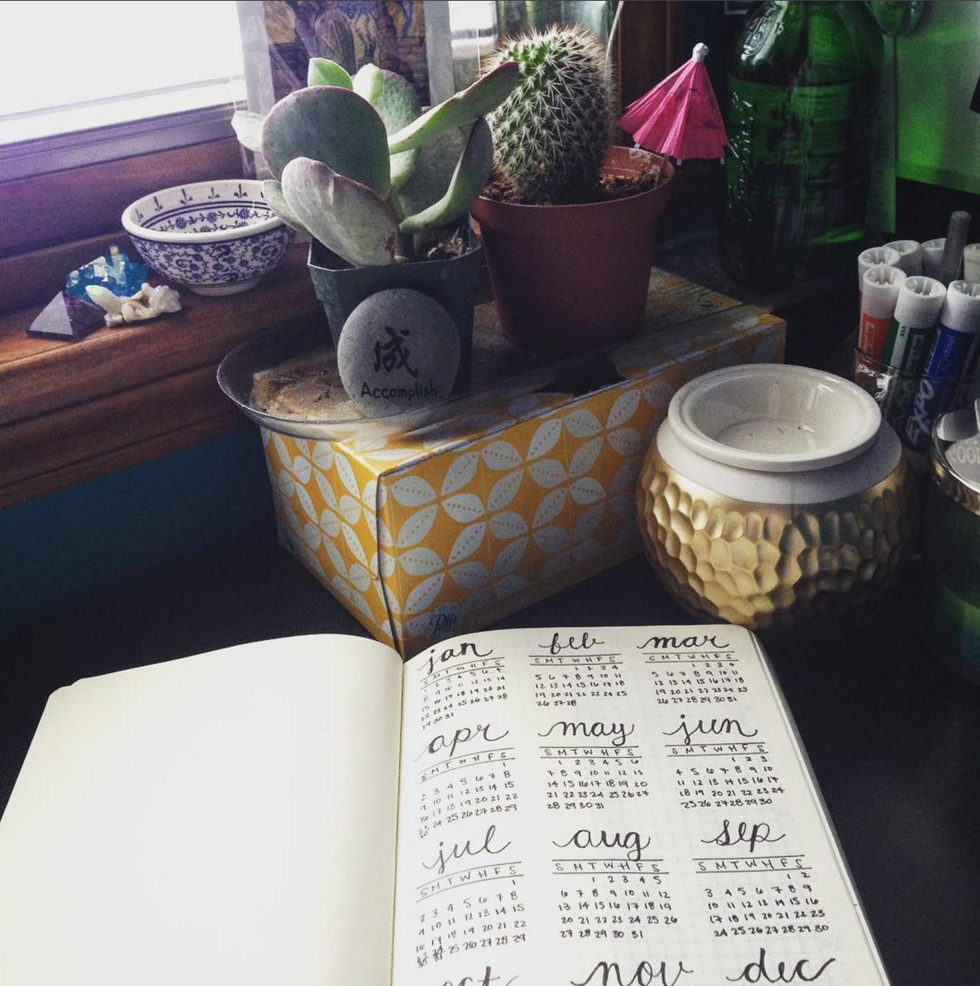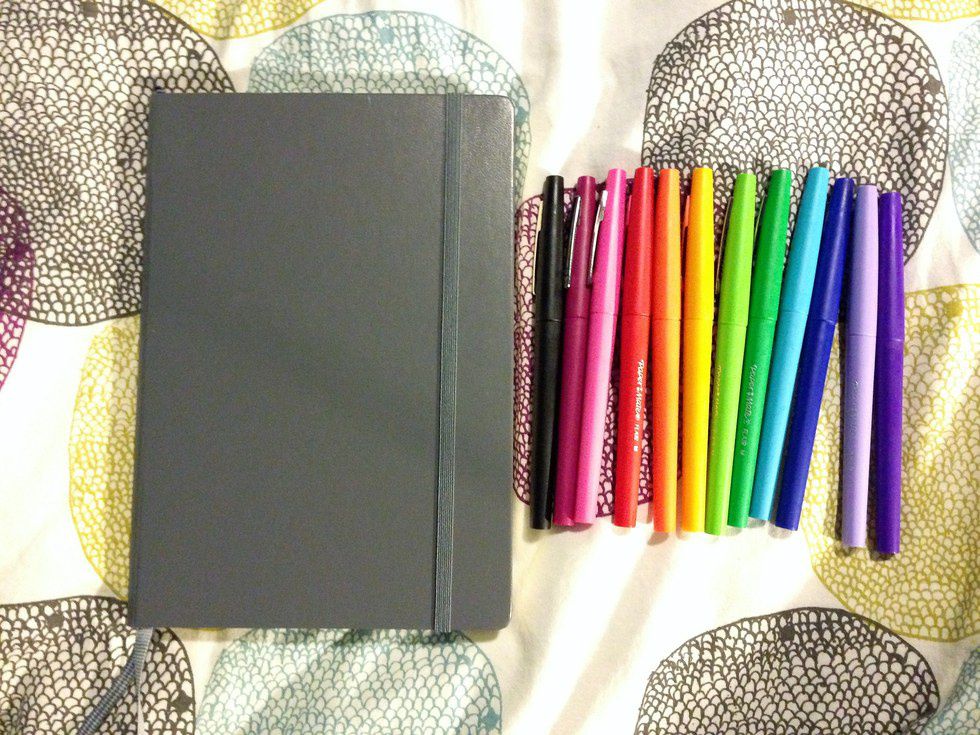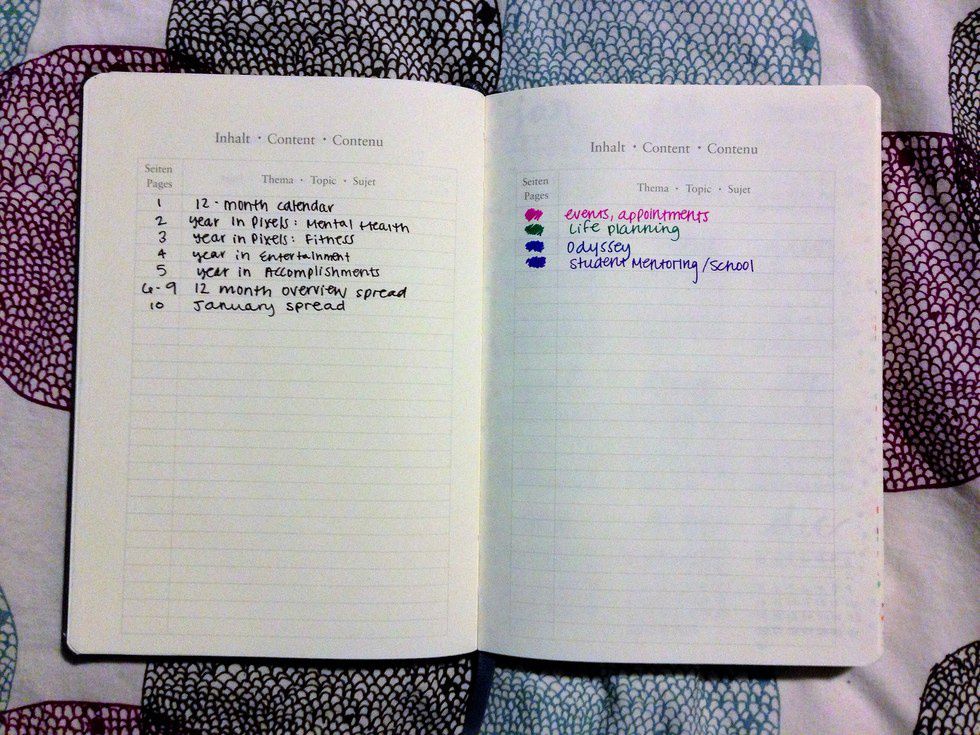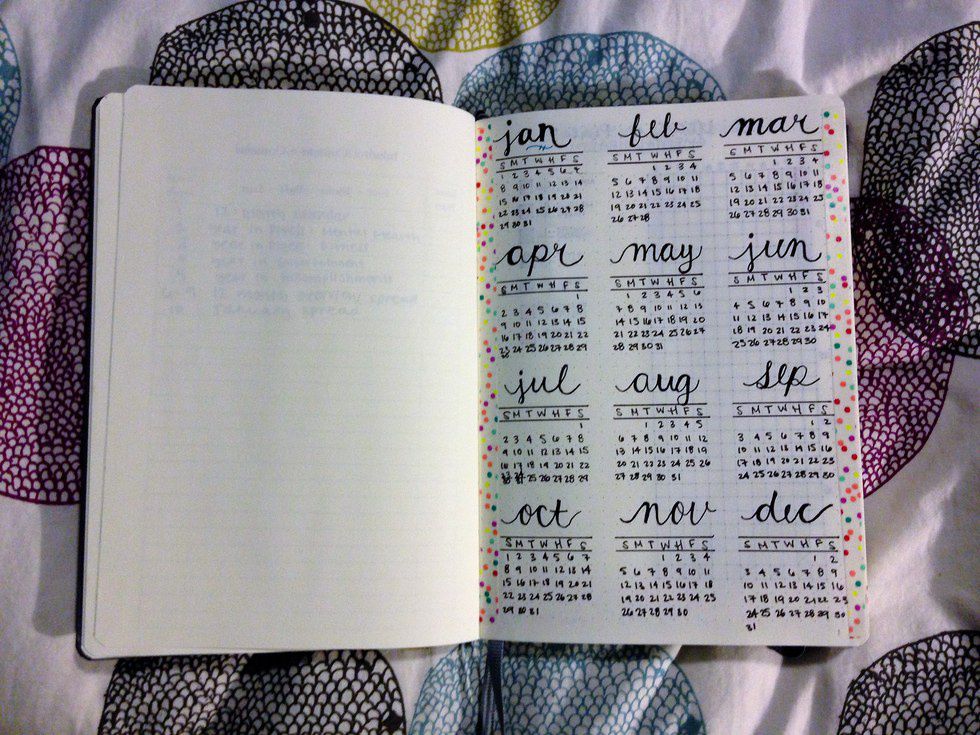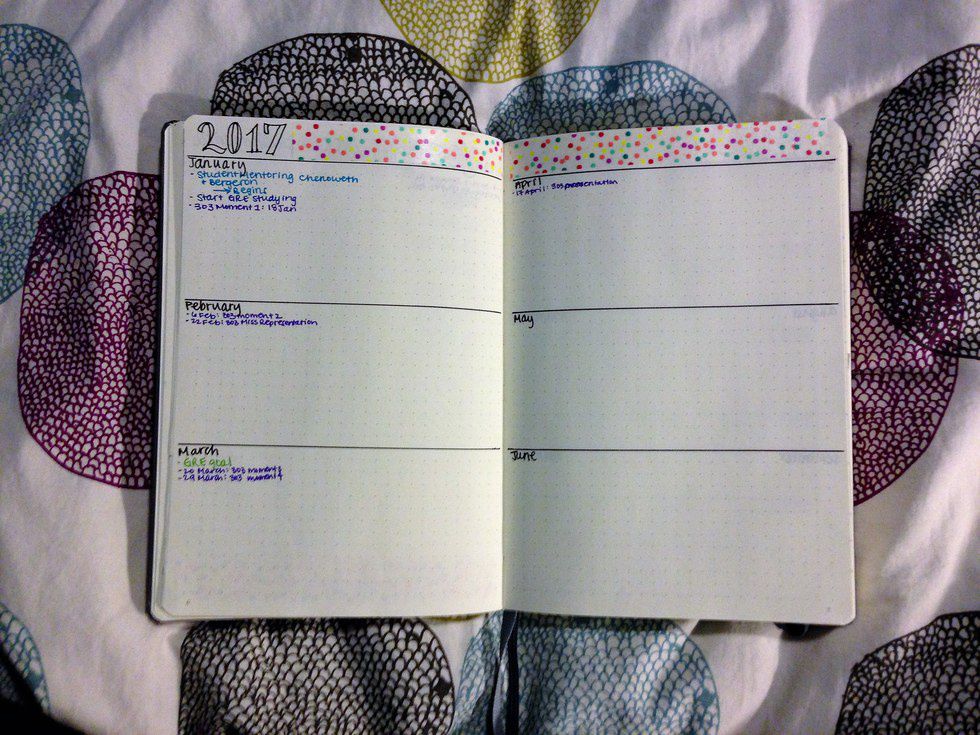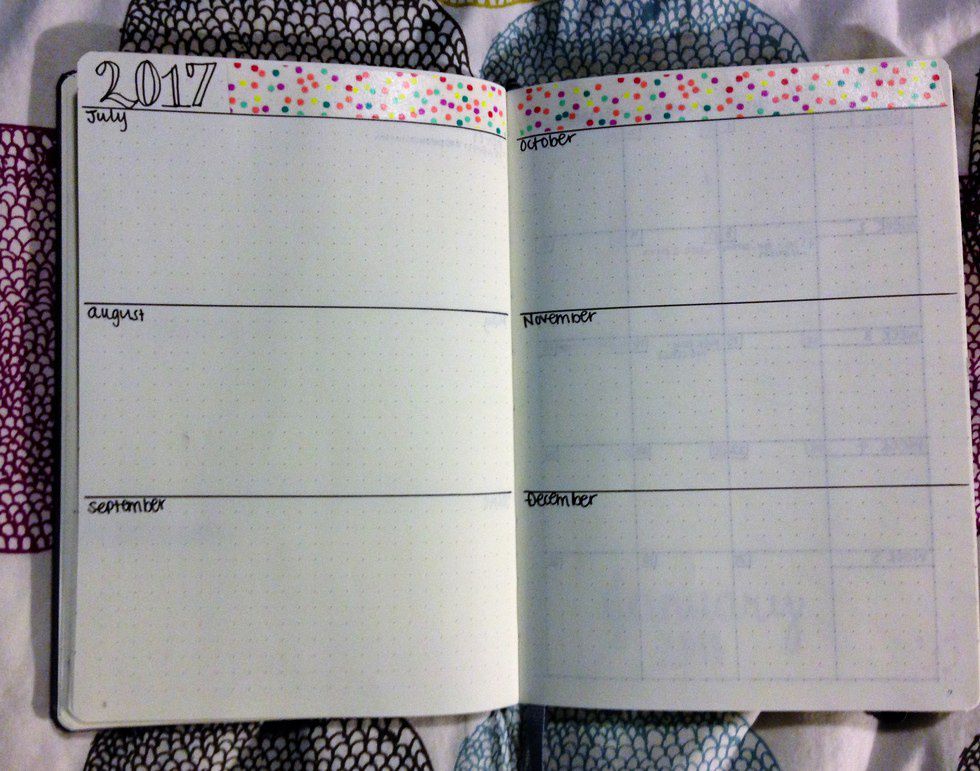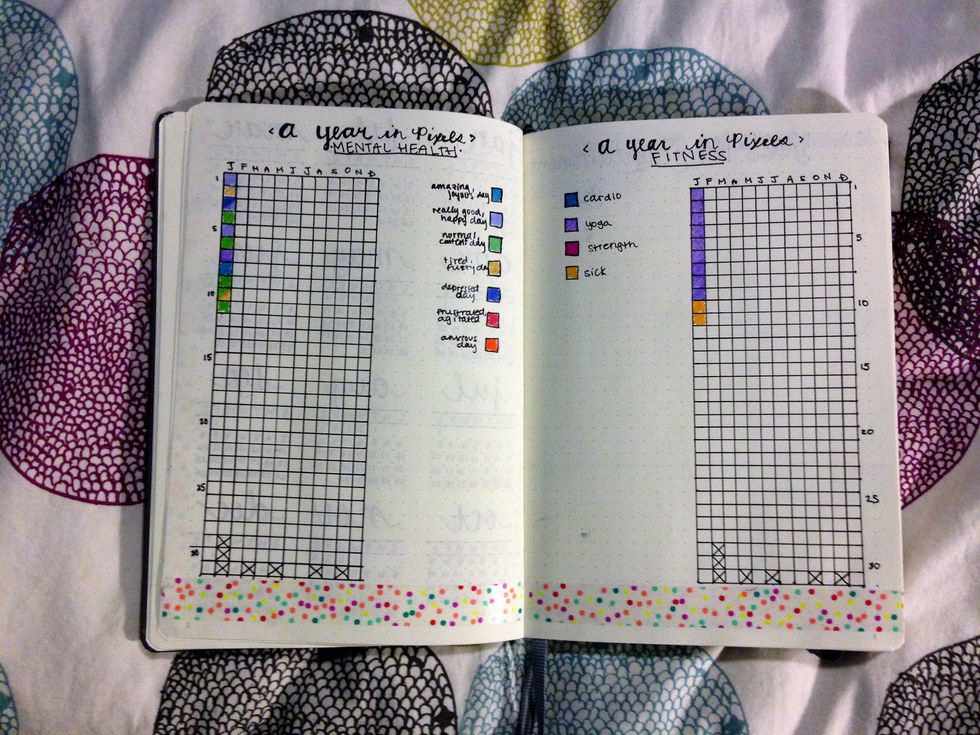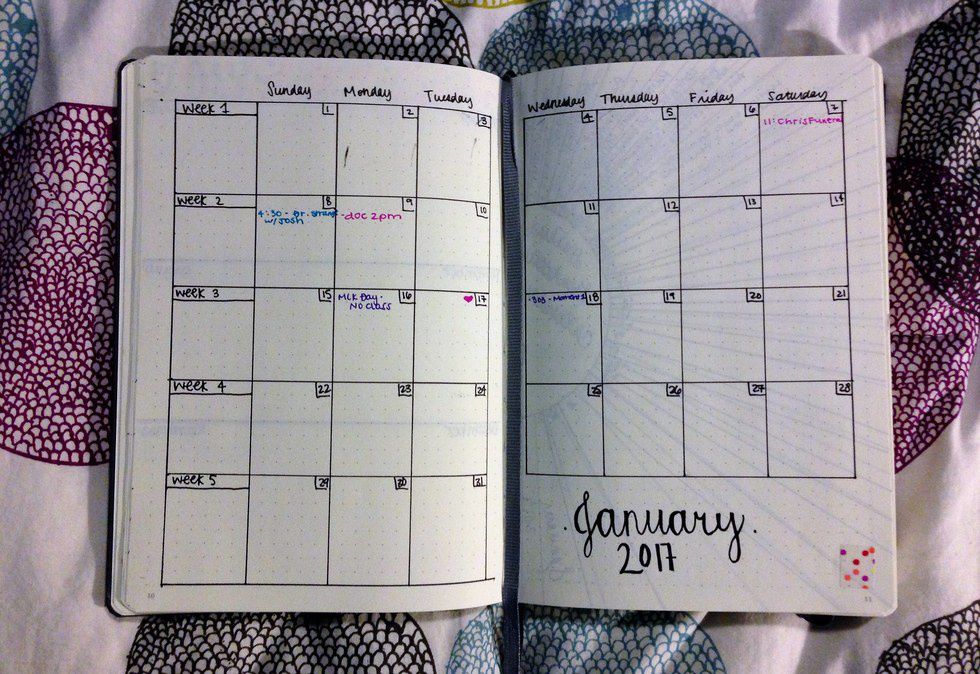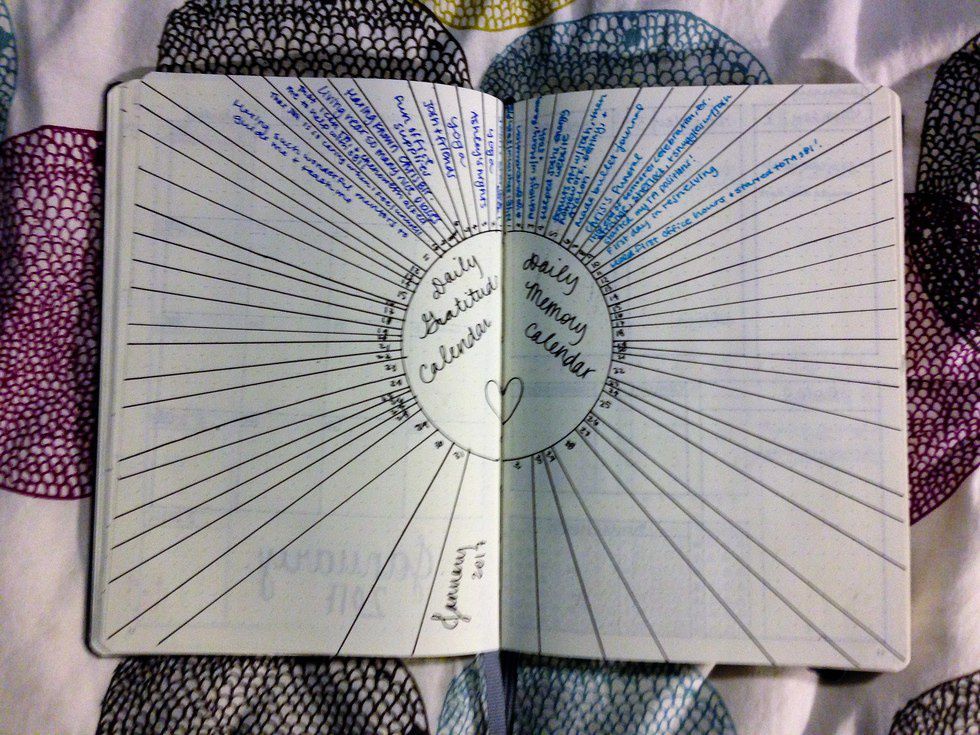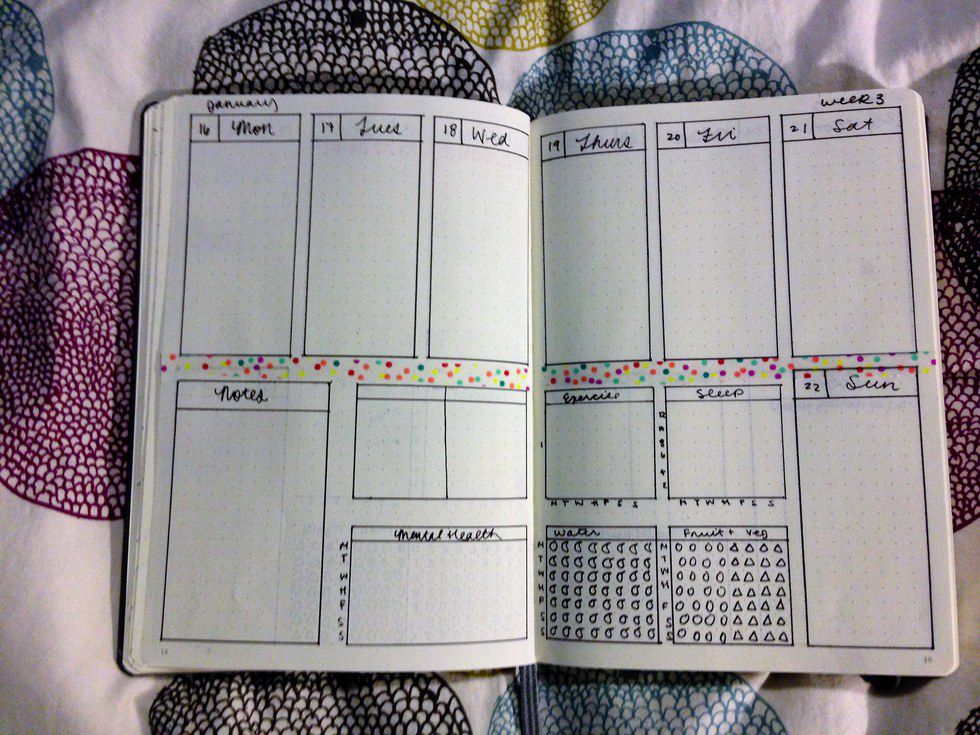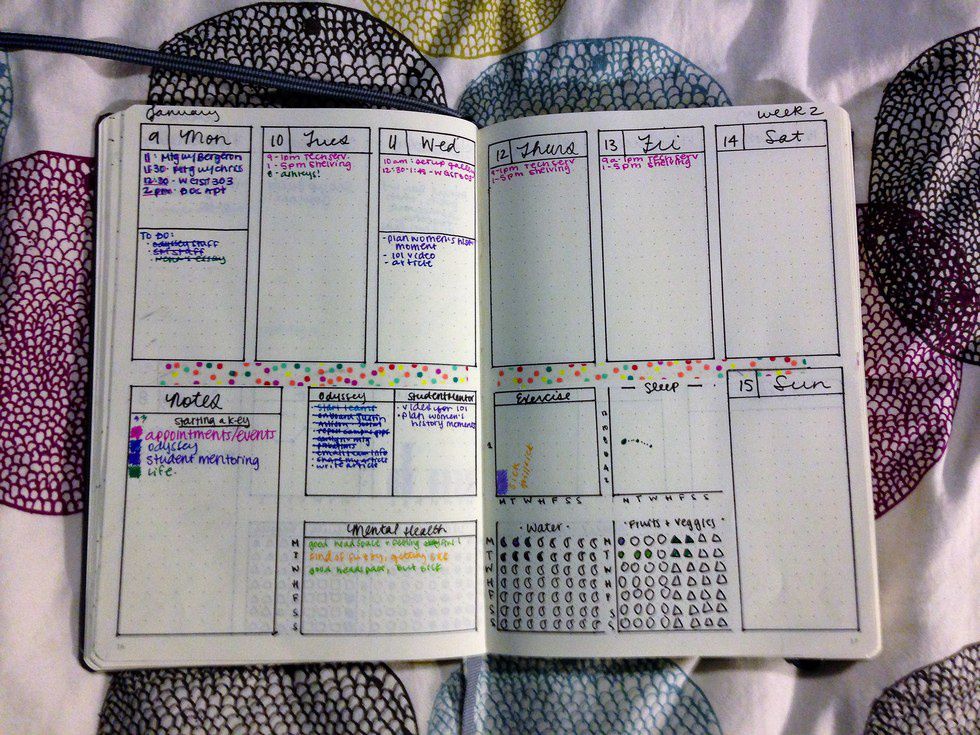You may or may not have seen the term "bullet journal" popping up here and there, especially over the last few weeks as everyone is starting their new years' resolutions, 2017 planning, new semesters, and new planners.
A bullet journal is everything planning-related in one place: all those mini to-do lists, a calendar, a planner, a diary, a journal, a way to track goal-setting and habits, a way to track health and fitness, a way to keep resolutions in check... everything! But how, you ask? The bullet journal is made up of a series of spreads that are malleable and changeable throughout the year. Essentially, the bullet journal layout is entirely up to you, as you can be the one to create it for yourself. This way, you have entire control over what you're tracking and how you're tracking it.
This year, I decided to take the plunge and try it out for myself! Reading this way after the year has started? Don't fret! You can start yours at any point in the year and it will still be just as effective.
Here's how I put mine together for 2017. Feel free to try out any of my ideas, and be sure to check out other ideas as well before you begin!
Remember that the idea is to make it all about you. What do you want to focus on? Give yourself five minutes at the end of each day to reflect on yourself, your day, and your progress. Bullet journals are entirely about focusing on whatever you need!
First thing's first: the terminology.
Bullet Journal: the website calls it the "analog system for the digital age," and it is essentially a journal/planning system of note taking, list making, and habit tracking.
Index: a way to keep track of what is where in your journal, just like the index of a book
Future Log: a way to plan months in advance, to remind add to your bullet journal once you create that monthly spread
Month Log: a way to track your month ahead
Daily/Weekly Log: a way to track what you need to do in any given week or day
The Bullet Journal
Ultimately, the supplies you use are up to you. Any journal will work and so will any pen! I used the Leuchtturm1917 Medium A5 Dotted Notebook in Hardcover and Grey. The dotted pages make it so easy to create grids and spreads evenly and smoothly! It even has a pocket in the back, an index already created for you to fill in, numbered pages, and two page markers.
My favorite pens to use are Papermate Flair Pens because they come in so many colors and the felt tips write so smoothly.
In addition to these two items, I also used a 6-inch ruler to help keep my lines neat. Other fun additions could be post-it flags to denote each month/type of spread, and different washi tapes for each type of spread/month! Color coding spread layouts by type and/or month is something I want to try out moving forward as well.
Before creating your bullet journal, you should think about how much space you will use: how many pages do you think you will need? It's also a good idea to only plan by day or month, depending on how you set up the journal. You never know how much space you may need if you're making running lists!
The Index & Key
As for your key, many people use symbols to help them keep each item on their to-do list straight. I didn't do this. For me, colors resonate more, so I color-coded each type of item.
Year Calendar
Not a necessary step to the bullet journaling process, but something I thought would help me visualize the year.
Future Log
Here is where I will make note of anything planned out for future months I have not created spreads for yet. It's best to go month-by-month when bullet journaling -- you never know how much space you will need for any given month!
Year in Pixels Spread (Habit Tracking)
Need to track habits? Fitness? Health? I've found the year-in-pixels spread to be great for this! As a brief way to track each day, this is a great way to visualize what you want to track. As you can see, I for my mental health tracker, I color coded how different days might feel to give a visual to my progress and day-to-day. I did the same with fitness as well! It's a great way to check in with yourself and see how you're doing.
Want to track things other than your health? Not everything has to be about fitness. Create fun spreads with entertainment you've enjoyed like books, TV shows, movies, anything!
Monthly Log & Spreads
I chose to create a monthly calendar spread to keep track of future dates. Something to keep in mind, which I will be editing for my February spread (see? Editable!): Do you visualize your weeks as Sunday through Saturday, or Monday through Sunday?
I've also added monthly gratitude and memory spreads to my bullet journal. This way, I can help myself keep track of the positive and keep moving forward.
Weekly Log
Here you can see my weekly log. I chose not to do a daily log and instead work on a week-by-week basis. This helps me to visualize what I need to do and when. As you can see, habits I'm tracking include how long I'm exercising for, how much sleep I'm getting, how much water I'm drinking, how many fruits and veggies I am eating, and my mental health.
I use my Notes section for random to-dos that need accomplishing, or different things I'm trying with the journal (as you can see here, the beginning of my color-coding).
Day by day, the top half gets used for appointments, and the bottom half gets used for things on my to-do list. If you're like me and have commitments you're trying to keep track of, you can use additional boxes for smaller to-do lists (as you can see with my Odyssey and Student Mentor boxes).
I've also left a couple blank pages at the end of the month for reflections on each day as the month progresses.




